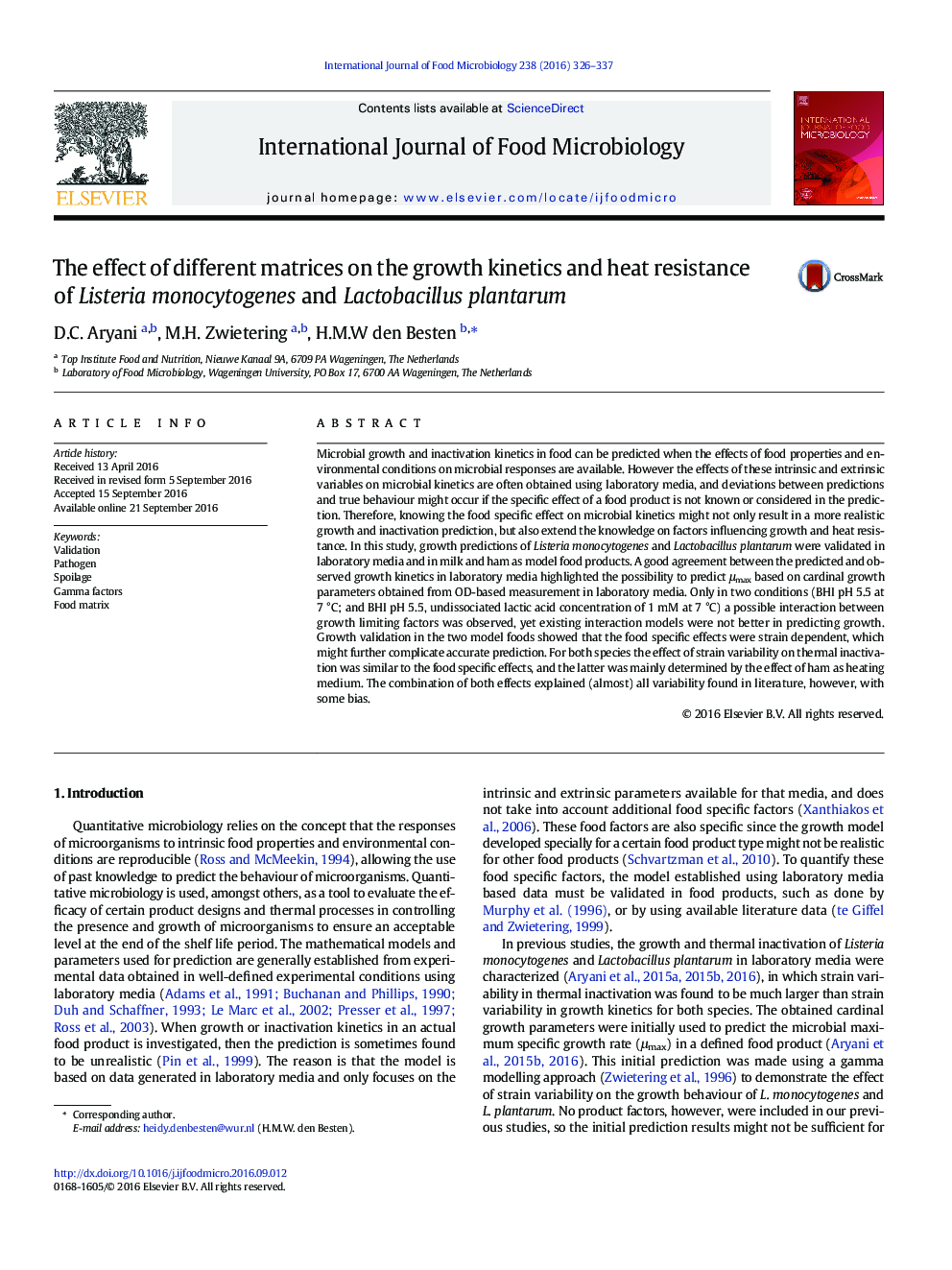| Article ID | Journal | Published Year | Pages | File Type |
|---|---|---|---|---|
| 4366150 | International Journal of Food Microbiology | 2016 | 12 Pages |
•Little deviation was observed between predicted and actual growth kinetics in media.•The effect of food products on growth and heat resistance was strain dependent.•The effect of food products on heat resistance was mainly determined by ham as a heating medium.•Strain variability and product specific effects explained almost all variabilities in literature.
Microbial growth and inactivation kinetics in food can be predicted when the effects of food properties and environmental conditions on microbial responses are available. However the effects of these intrinsic and extrinsic variables on microbial kinetics are often obtained using laboratory media, and deviations between predictions and true behaviour might occur if the specific effect of a food product is not known or considered in the prediction. Therefore, knowing the food specific effect on microbial kinetics might not only result in a more realistic growth and inactivation prediction, but also extend the knowledge on factors influencing growth and heat resistance. In this study, growth predictions of Listeria monocytogenes and Lactobacillus plantarum were validated in laboratory media and in milk and ham as model food products. A good agreement between the predicted and observed growth kinetics in laboratory media highlighted the possibility to predict μmax based on cardinal growth parameters obtained from OD-based measurement in laboratory media. Only in two conditions (BHI pH 5.5 at 7 °C; and BHI pH 5.5, undissociated lactic acid concentration of 1 mM at 7 °C) a possible interaction between growth limiting factors was observed, yet existing interaction models were not better in predicting growth. Growth validation in the two model foods showed that the food specific effects were strain dependent, which might further complicate accurate prediction. For both species the effect of strain variability on thermal inactivation was similar to the food specific effects, and the latter was mainly determined by the effect of ham as heating medium. The combination of both effects explained (almost) all variability found in literature, however, with some bias.
